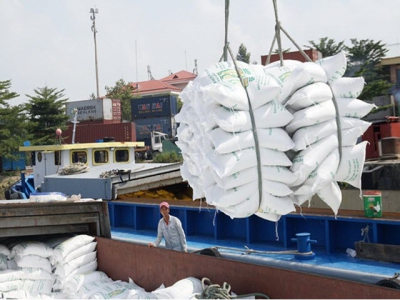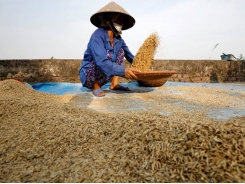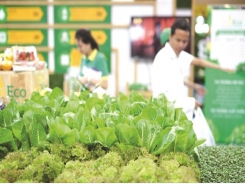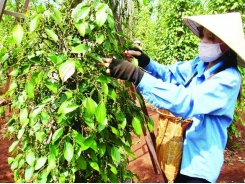Vietnams rice exports to the EU stay modest due to limited quota

According to the Ministry of Industry and Trade (MoIT), Vietnam has seen modest earnings from rice exports to the EU market due to high import duties and restrictions caused by limited rice quotas provided by the EU.
Vietnam's rice export over the past time has increased 5.1% in volume (Photo: Vietnam Biz)
According to Tran Thanh Hai, Deputy Director of the MoIT's Import and Export Department, Vietnam's rice export to the EU in 2019 was at a low level, reaching about 20,000 tonnes worth USD 10.7 million, informed VOV.
Meanwhile, the average rice consumption of the EU hovered at roughly 2.5 million tonnes per year from 2016-2020.
This is because Vietnam has been granted limited rice quotas by the EU, therefore, making it difficult to compete with other nations such as Thailand, the US, Australia, which have received higher tariff quotas.
"The EU market has the highest requirements in the world for imports, so the challenge for Vietnam's rice exporters to step into this market is very huge. Rice products are forced to meet food safety issues, origin, pesticide residues, environmental protection standards", said a representative from the Import and Export Department.
According to the Import and Export Department, Vietnam's rice export over the past time has increased 5.1% in volume and 18.9% in value over the same period in 2019. As a result, Vietnam's rice exports may surpass Thailand's. In the first 5 months of 2020, Thailand exported only 2.57 million tonnes of rice, while Vietnam reached 2.9 million tonnes. Therefore, Vietnam has risen to the 2nd position, behind India in terms of rice export volume, reported by Financial Times.
Although Thailand exports less rice, its economic value is more than USD 1.7 million compared to USD 1.41 million of Vietnam. This shows the quality of Vietnam's rice is not high, and the competitiveness is low compared to other competitors.
Therefore, businesses should improve their internal production capacity, improve rice quality, meet consumer demand to seize opportunities from EVFTA, successfully conquer the EU market.
Moreover, underdeveloped regional countries including Laos, Cambodia, and Myanmar are exempt from import duties and enjoy quota-free access for all of their export goods to the EU market.
In line with the EU-Vietnam Free Trade Agreement (EVFTA) which came into force on August 1, the EU has pledged to provide an annual rice quota of 80,000 tonnes to the nation, including tariffs on rice products being slashed to 0% over the next three to five years.
Despite these pledges, the EU is expected to allocate a remarkable rice quota to European enterprises, therefore Vietnamese rice exporters have been advised to contact these firms in order to do business with them.
With regard to jasmine rice, the EVFTA requires additional documents from Vietnamese authorities who must finalize all legal documents as a means of meeting the requirements set by the EU market in the coming time.
Related news
Tools

Phối trộn thức ăn chăn nuôi

Pha dung dịch thủy canh

Định mức cho tôm ăn

Phối trộn phân bón NPK

Xác định tỷ lệ tôm sống

Chuyển đổi đơn vị phân bón

Xác định công suất sục khí

Chuyển đổi đơn vị tôm

Tính diện tích nhà kính

Tính thể tích ao




 Fresh Vietnamese longan on sale in Australian market
Fresh Vietnamese longan on sale in Australian market  Vietnam’s pepper industry faces"double difficulties"
Vietnam’s pepper industry faces"double difficulties"